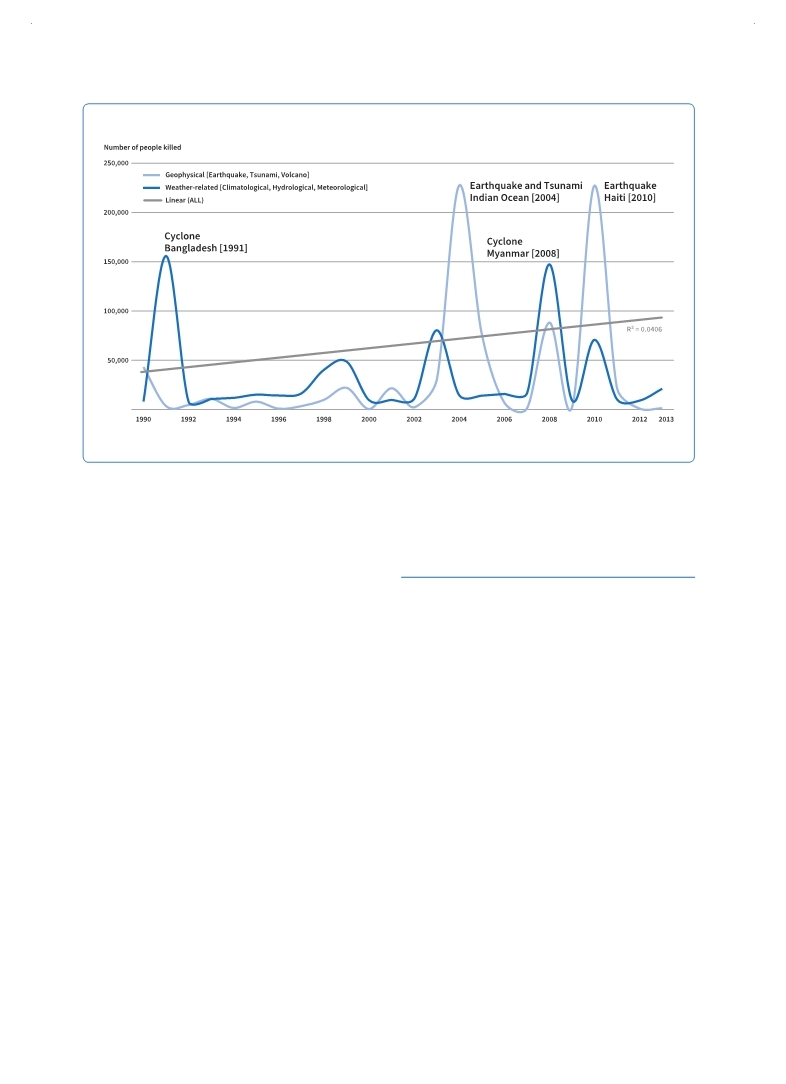 |
Global Assessment Report on Disaster Risk Reduction 2015
Making development sustainable: The future of disaster risk management |
 |
Global Assessment Report on Disaster Risk Reduction 2015
Making development sustainable: The future of disaster risk management |
|
|

48
Part I - Chapter 2
mortality since 1990 is concentrated in only four events (Cyclone Gorky in Bangladesh in 1991, the Indian Ocean tsunamis in 2004, Cyclone Nargis in Myanmar in 2008 and the Haiti earthquake in 2010). While mortality might appear to be on the rise, this trend is not statistically significant and changes arbitrarily depending on the time period chosen and the specific intensive disasters occurring in that period.6
2.2 Economic loss reduced?
Absolute economic loss is rising, but in relative terms, the global increase in economic loss from disasters is not statistically significant. However, in some regions, losses have outstripped GDP growth. While absolute economic loss is concentrated in higher-income countries, in relative terms it remains a far greater problem for lowincome countries.
Most high-income countries have the regulatory quality and have made investments to significantly reduce the more extensive layers of disaster risk associated with losses occurring over short return periods. In addition, the citizens of these countries enjoy high levels of social protection, including effective emergency services and health coverage, meaning that highincome countries account for less than 12 per cent of internationally reported disaster mortality (Figure 2.1).
(Source: UNISDR with data from national loss databases.)
Figure 2.5 Mortality from disasters concentrated in few intensive events
|
 
Page 1Page 10Page 20Page 30Page 38Page 39Page 40Page 41Page 42Page 43Page 44Page 45Page 46Page 47Page 48Page 49->Page 50Page 51Page 52Page 53Page 54Page 55Page 56Page 57Page 58Page 59Page 60Page 61Page 62Page 70Page 80Page 90Page 100Page 110Page 120Page 130Page 140Page 150Page 160Page 170Page 180Page 190Page 200Page 210Page 220Page 230Page 240Page 250Page 260Page 270Page 280Page 290Page 300Page 310
|
|
 
|
 
|
